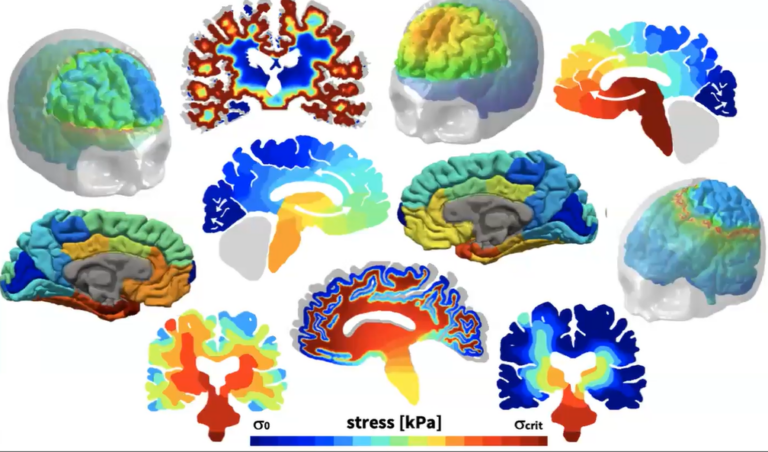
21 Feb Democratizing Engineering Analysis Through a Universal Material Subroutine
This Dassault Systemes blog post is based on a paper written by Dr. Ellen Kuhl from Stanford University and Dr. Mathias Peirlinck from Delft University of Technology and presented during the Living Heart Project’s monthly webinar series.
The full webinar can be found here.
The original paper can be found here.
The manuscript that describes in more detail what we have shown in the talk and the link to the code is posted here.
Universal Material Subroutine
Constitutive modeling is the cornerstone of continuum and structural mechanics. In a finite element analysis, the constitutive model is encoded in the material subroutine, providing the functional map between strains and stresses in the governing equations. This function is called within every finite element, at each integration point, within every time step, at each Newton iteration. Today’s finite element analysis packages offer large libraries of material models to choose from. However, the scientific criteria for appropriate model selection remain highly subjective and prone to user bias. Here we show how to fully automate the process of model selection, autonomously discover the best model and parameters from experimental data, encode all possible discoverable models into a single material subroutine, and seamlessly integrate this universal material subroutine into finite element simulations. We have successfully prototyped this technology for various incompressible, isotropic, hyperelastic materials and, recently, further expanded it towards both compressible and anisotropic material behavior. We demonstrate how to collectively integrate these features into a single universal material subroutine that will be made available as a build-in material modeling feature in future Abaqus releases. Finite element simulations with this novel universal material subroutine show that it specializes well to traditional constitutive models, generalizes well to newly discovered models, and agrees excellently with both experimental data and previous simulations. Replacing dozens of individual material subroutines by a single universal material subroutine that is populated directly via automated model discovery, entirely without human interaction, will democratize engineering analysis and make finite element simulations more accessible to a more inclusive and diverse community to accelerate scientific innovation.
Exploring Further Applications and the Importance of Understanding Mechanical Properties
The model has been successfully extended to analyze the mechanical behavior of other tissues such as skin and artificial meat. The ability to understand and predict the mechanical properties of various materials is of paramount importance in fields ranging from biomedicine to food science.
For instance, in the case of skin, the model has been used to explore the behavior of different layers and has provided insights into applications such as skin folding, wrinkling, and reconstructive surgeries. This demonstrates the versatility and wide-ranging implications of the developed model.
Moreover, the model’s application extends beyond research and practical use. It has also been integrated into teaching scenarios, offering students the opportunity to experiment with and understand the mechanical behavior of various materials. This includes a class that allows students to test different materials and analyze their mechanical properties. For example, in a class project, students tested artificial meat products and used the model to understand the relationship between material stiffness and the perception of taste.
Universal Material Subroutine Implementation in Abaqus
The constitutive artificial neural network model has been integrated into Abaqus as a built-in subroutine with activation functions. This new subroutine contains dozens of hyperelastic models as special cases and thousands of new discoverable models. It perfectly matches the results of classical models, and the data of newly discovered models, demonstrating its effectiveness in capturing complex material behaviors.
The team is currently expanding the material subroutine beyond hyperelasticity to model viscous behavior, damage, or plasticity. Ongoing testing shows promising first results and has attracted interest from several industrial partners.
This integration allows for the use of the universal material subroutine, which enables the definition of material models with just a few parameters, making it comparable to traditional hyperelastic modeling. The implementation has been tested for materials exhibiting strong history dependence and has shown robust performance. Ongoing testing includes combining the approach with viscoelasticity and inelasticity, with promising results.
The open collaboration and availability of the model encourage researchers and engineers to explore its applications across various materials and simulations, contributing to advancements in biomedical stimulation and human health. The integration of the constitutive artificial neural network model into Abaqus marks a significant step towards enabling a wider audience to leverage its capabilities for diverse applications.


